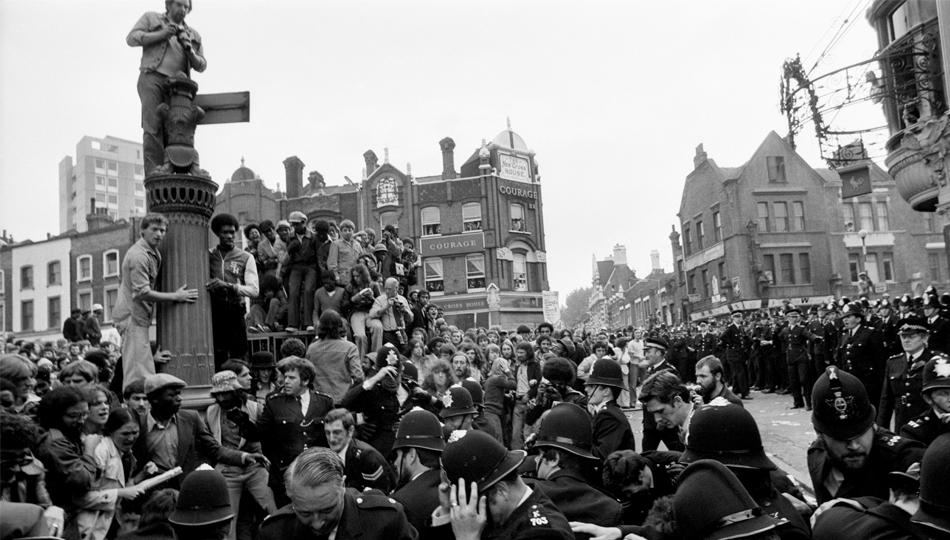What does the ‘Battle of Lewisham’ mean to you? Residents invited to help create public monument to historic day for British race relations
Primary page content
Goldsmiths, University of London is inviting people to help decide the wording of a commemorative plaque marking the 40th anniversary of the day south London stood firm in opposition to the racist and fascist National Front.

On 13 August 1977, the far-right National Front (NF) attempted to stage a march from New Cross and through Lewisham under the pretext of marching ‘against muggers’.
The local community and activist organizations took to the streets of Lewisham to oppose the march, resulting in violent clashes between counter-demonstrators, members of the NF and the police as each tried to hold their ground.
After a series of running battles on the streets of Lewisham, the NF abandoned their plan and were escorted out of the area by police.
To commemorate these events, The Mayor of Lewisham and Lewisham Council have agreed to install a commemorative Maroon Plaque on New Cross Road which will be unveiled on 13 August 2017, exactly forty years on.
Goldsmiths historian Dr John Price, a driving force behind the commemorative events, is asking local people to help suggest what the plaque should say.
He says:
“The counter-demonstrations opposing the NF on the 13 August 1977 involved thousands of people, from all walks of life, and many from the south London area. This commemorative plaque is intended to recognize and commemorate the breadth and diversity of the opposition that day and, as such, it is vital that everybody has the opportunity to help decide what it should say”.
Have your say!
You can make your suggestion by:
1. Casting your vote in person by completing a suggestion card at one of our ‘consultation stations’
3 -19 April
19 – 28 April
- Deptford Lounge
- New Cross Learning
- The Archibald Corbett Community Library, Arts and Heritage Centre
2. Voting online at www.sites.gold.ac.uk/Battle-of-Lewisham
3. Tweeting. Send your ideas to @GoldsmithsUoL and tag #Lewisham1977
Vote before midnight Sunday 30 April for a chance to see your suggestion on the Plaque.